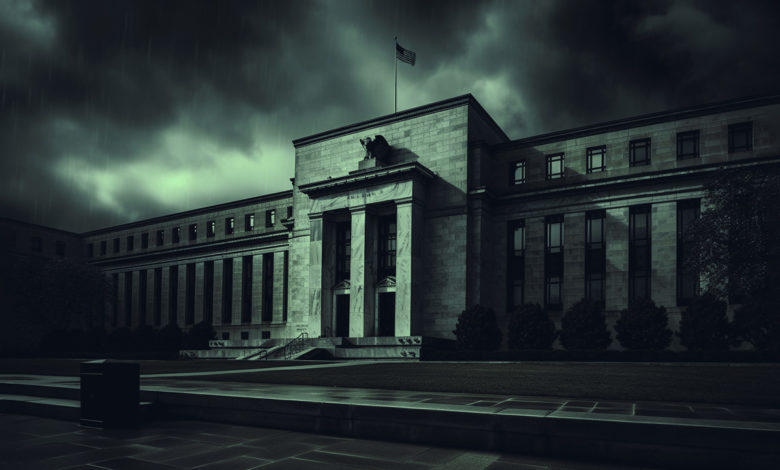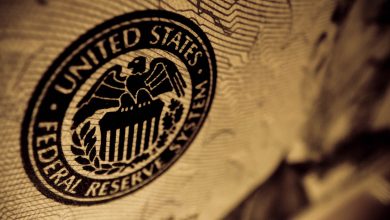What’s Going on With the Fed Balance Sheet?

We tend to focus a lot on the Federal Reserve’s interest rate policy, while the central bank’s balance sheet stays in the background. But the balance sheet arguably has more impact on the economy over the long run.
Since the Fed began hiking interest rates in March 2022, it has also shrunk the balance sheet. But balance sheet reduction hasn’t been aggressive. In fact, the decline in the balance sheet since the pandemic is like a drop of water in the ocean compared to the massive expansion we’ve seen since 2008.
As of June 21, the balance sheet stood at $8.362 trillion. The Fed still hasn’t gotten back to the $8.34 trillion low the Fed managed to hit prior adding $394 billion in loans to the balance sheet for the bank bailouts.
Since the Fed announced its balance sheet reduction plan, it has shed about $603 billion from the $8.965 trillion post-pandemic peak.
That sounds like a lot. But when you consider the Fed added $4.81 trillion to the balance sheet in just two years thanks to the government response to the pandemic, $603 billion barely moves the balance sheet needle. It
In fact, the Fed never had any intention of normalizing the balance sheet.
In March 2022, the central bank announced a balance sheet reduction plan. It called for $30 billion in US Treasuries and $17.5 billion in mortgage-backed securities to roll off the balance sheet in June, July and August 2022. That totaled $45 billion per month. The Fed said it would increase the pace to $95 billion per month in September 2022.
It was a tepid plan to begin with. If the Fed followed the blueprint, it would take 7.8 years for the Fed to shrink its balance sheet back to pre-pandemic levels.
And they haven’t even stuck to the blueprint.
Given the plan, the central bank’s balance sheet should have dropped by $655 billion as of the end of December 2022. The Fed hasn’t even reached that target as of today.
This reveals a dirty little secret.
The Federal Reserve can’t shrink its balance sheet in a meaningful way.
When the economy is bad, the Fed ramps up quantitative easing and the balance sheet expands quickly. But when times are good, the Fed is very slow to shrink the balance sheet. In other words, once it injects trillions in liquidity into the economy, it can’t get it out without popping all of the bubbles it blew up and collapsing the economy.
The trajectory of the balance sheet after the 2008 financial crisis drives this home.
In the early days of the Great Recession, then-Federal Reserve Chairman Bernanke assured Congress that the central bank was not monetizing debt. He said the difference between debt monetization and the Fed’s policy was that the central bank was not providing a permanent source of financing. He said the assets would only remain on the Fed’s balance sheet temporarily. He assured Congress that once the crisis was over, the Federal Reserve would sell the bonds it bought during the emergency.
That never happened.
Bernanke ran three rounds of quantitative easing, pushing the balance sheet from $8.98 billion before the financial crisis to just over $4.5 trillion by December 2014.
The central bank tried to unwind some of this and reduce the balance sheet in 2018. Remember when it said balance sheet reduction was on “auto-pilot?” Well, that didn’t last long. The Fed quickly reversed course after the stock market crashed and the economy got wobbly in the fall of that year. At its low point, the balance sheet dipped just below $3.76 trillion. It wasn’t even able to shed $1 trillion of the Great Recession monetary stimulus.
Some will claim the Fed had no choice because of the pandemic, but this is historical revisionism. In fact, the Fed had already returned to quantitative easing before the coronavirus, and the balance sheet was back above $4 trillion in October 2019.
And today, the balance sheet is double that.
It’s clear that the balance sheet is destined to grow into perpetuity. When the next crisis comes along, the Fed will almost certainly blow the balance sheet up again. Who knows how high it will go? Fifteen trillion? Twenty trillion? The sky’s the limit.
And that means the central bank can never truly get a handle on price inflation.
When the Fed buys US Treasury bonds and mortgage-backed securities, it does so with money created out of thin air. That money then works its way into the financial system. This increase in the money supply is inflation. Price inflation is a symptom of this monetary inflation.
Since the Fed can’t ever wring the liquidity out of the economy in the good times, the inflation never goes away. And with the next crisis, the central bank piles more inflation on top of what was already there.
The trajectory of the balance sheet reveals the ugly truth. The Federal Reserve can’t whip price inflation. And it’s not even trying.
Call 1-888-GOLD-160 and speak with a Precious Metals Specialist today!
Buka akaun dagangan patuh syariah anda di Weltrade.
Source link








